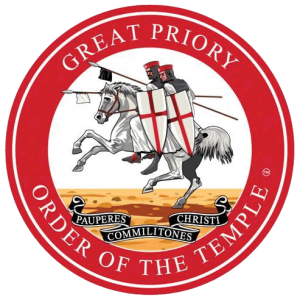
The Templar Degree
A brief introduction
The introduction into the Masonic Order is by Initiation into the Templar Degree, a ceremony that is modelled somewhat idealistically upon a series of trials and experiences through which a pilgrim or crusader in the Holy Land might have been required to pass in his transition into the Order of warrior monks known as the Knights Templar. The history of the original Military Order of Knights Templar is broadly accepted up to the year 1314. It has been widely published in numerous genuinely historical works, as well as widely written about in works of what can perhaps best be described as being speculative, or even fanciful, rather than genuinely historical.

Jacques de Molay
In summary, however, the original Order came into existence in 1119 as ‘The Poor Knights (or Poor Fellow-Soldiers) of Christ and of the Temple of Solomon’, after the 1st Crusade (1095-99) ended with the capture of Jerusalem on 15th July 1099 from its Muslim defenders. The original nine knights, of whom Hughes de Payens from Champagne was the leader, were already French chivalric knights. They were neither Pilgrims themselves nor Crusaders, but they formed themselves into a small force of – in effect – warrior monks to protect Christian Pilgrims in their crusading travels through the Holy Land from Jaffa to Jerusalem. The Order later gained Papal blessing and charitable status as a Monastic Order under the Cistercian Rule of St Bernard and answerable only to the Pope; they subsequently paid no taxes and accumulated great wealth in land and property throughout Europe and the Middle-East. The eventual wealth of the Templars proved to be their undoing.
History records that the Templars existed as an Order for barely 200 years. The Order was largely eliminated following the arrests in France of many Knights on Friday 13th October 1307 under the orders of Phillipe le Bel, King of France. Following years of persecution and torture under accusations that included heresy, the Pope disbanded the Templars by the Papal Bull Vox In Excelso of March 22nd 1312. In March 1314 the Grand Master of the day, Jaques de Molay, and other Knights were burned at the stake in Paris; those who survived persecution and remained at liberty dispersed themselves throughout Europe or were absorbed, with much of their remaining wealth, into the Order of Knights Hospitaller, or Knights of St John. Masonic Templar history, as we know it today, recognises that the original military Templar Order effectively ceased to exist following the death of de Molay; after that there is little that can with any confidence yet be called ‘history’ in relation to any later continuity of the original Order. The Masonic Order of Knights Templar or, to give the Order its full title, The United Religious, Military and Masonic Orders of the Temple and of St John of Jerusalem, Palestine, Rhodes and Malta, began to appear in Europe during the years leading up to its appearance in Britain from the 1760s onwards, after an interval approaching 450 years. After such an interval of lost history, what can be supposed might have been in the minds of those 18th century Masons like, for example Thomas Dunckerly, who appointed themselves responsible for the creation of a Templar ritual for the Masonic Order?
Various attempts have been made over the years to explain how the Templars might have survived extinction in 1314, perhaps through links with Freemasonry as it evolved in Europe. While all such theories are interesting and some have been well researched, none have yet been accepted without question. One example exists in Mark Masons’ Hall, the official home in London of the United Orders in England and Wales and its Provinces Overseas: a Charter variously described as the Charter of Transmission or Charter of Larmenius. The Charter purports to list continuous line of some twenty-two Templar Grand Masters from 1324 until 1804. Unfortunately, the origins of the Charter and its contents have never been authenticated beyond doubt, despite examination by the Departments of Manuscripts at the British Museum (1960) and the British Library (1977). The fact remains, that the history of the Military Order of Knights Templar and its connections with Freemasonry are still shrouded in myth, mystery and are a fertile source of romantic tales. Whatever its actual origins, the Masonic Order of Knights Templar is an overtly Christian Order that models much of its ritual on the chivalric practices and beliefs on the Templars of old, producing a colourful and contemplative ceremony of initiation that is at times quite exciting.